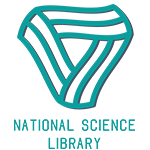Please use this identifier to cite or link to this item:
https://openscience.ge/handle/1/2735| DC Field | Value | Language |
|---|---|---|
| dc.contributor.author | Giorgadze, Giorgi | en |
| dc.contributor.author | გიორგაძე, გიორგი | ka |
| dc.date.accessioned | 2021-12-29T19:50:12Z | - |
| dc.date.available | 2021-12-29T19:50:12Z | - |
| dc.date.issued | 2020 | - |
| dc.identifier.citation | Collection of Scientific Papers, 2020 | en |
| dc.identifier.citation | სამეცნიერო შრომების კრებული, 2020 | ka |
| dc.identifier.uri | https://openscience.ge/handle/1/2735 | - |
| dc.identifier.uri | https://doi.org/10.48616/eeu-csp-2020-p124 | - |
| dc.description.abstract | The requirements of the design and construction market in the context of a global pandemic era are fundamentally different from the usual picture of previous years. The economic crisis affected all sectors of the national economy In general, but one of the most important areas – tourism, should be especially noted, the income of which is an important and reliable source of budget replenishment, and the development of which was largely determined by the size and intensity of foreign tourist flows. Extraordinary measures were taken by the state to protect the population: The closure of the country's external gates, the quarantine regime, social distancing, etc. caused complete stagnation in this area; The suspension of the tourism activities has created many problems for employers and industry workers, operating companies and the budget. No effective ways to get out of the current crisis situation have yet been found, but there are alternative directions, the emergence of which is associated with pre-design multidisciplinary research and the preparation of the necessary feasibility studies based on the generalization of their results. One of these promising areas is a new understanding of the river factor in the historical development; In this respect, the Mtkvari River represents a significant spatial planning environment for the development of Tbilisi's tourism infrastructure. The article discusses the possibilities of using the banks of the river and its underwater space to create attractive tourist objects. The challenges of the circular economy determine the architectural and planning conditions and the composition of design and technical specifications for the construction of specific buildings and structures | en |
| dc.language.iso | en | en |
| dc.publisher | აღმოსავლეთ ევროპის უნივერსიტეტი | ka |
| dc.publisher | East European University | en |
| dc.subject | Interdisciplinary research | en |
| dc.subject | Circular economy | en |
| dc.subject | Attractive tourist objects | en |
| dc.subject | მრავალპროფილური კვლევები | ka |
| dc.subject | ცირკულარული ეკონომიკა | ka |
| dc.subject | ატრაქტული ტურისტული ობიექტები | ka |
| dc.title | Interdisciplinary research Circular economy Attractive tourist objects | en |
| dc.title | ტურისტული ინფრასტრუქტურის ობიექტების პროექტირება ცირკულარული ეკონომიკის პირობებში | ka |
| dc.type | Article | en |
| dc.type | სტატია | ka |
| dc.contributor.institution | აღმოსავლეთ ევროპის უნივერსიტეტი | ka |
| dc.contributor.institution | East European University | en |
| item.languageiso639-1 | en | - |
| item.cerifentitytype | Publications | - |
| item.cerifentitytype | Publications | - |
| item.openairetype | Article | - |
| item.openairetype | სტატია | - |
| item.openairecristype | http://purl.org/coar/resource_type/c_18cf | - |
| item.openairecristype | http://purl.org/coar/resource_type/c_18cf | - |
| item.fulltext | With Fulltext | - |
| item.grantfulltext | open | - |
| Appears in Collections: | სტატიები | |
Files in This Item:
| File | Description | Size | Format | |
|---|---|---|---|---|
| 76-Article Text-123-1-10-20210404.pdf | Design of Tourism Infrastructural Objects in Conditions of Circular Economy | 5.16 MB | Adobe PDF | View/Open |
| 76-Article Text-124-1-10-20210404.pdf | ტურისტული ინფრასტრუქტურის ობიექტების პროექტირება ცირკულარული ეკონომიკის პირობებში | 6.87 MB | Adobe PDF | View/Open |
CORE Recommender
Page view(s)
155
checked on May 18, 2024
Download(s)
59
checked on May 18, 2024
Google ScholarTM
Check
Items in DSpace are protected by copyright, with all rights reserved, unless otherwise indicated.

